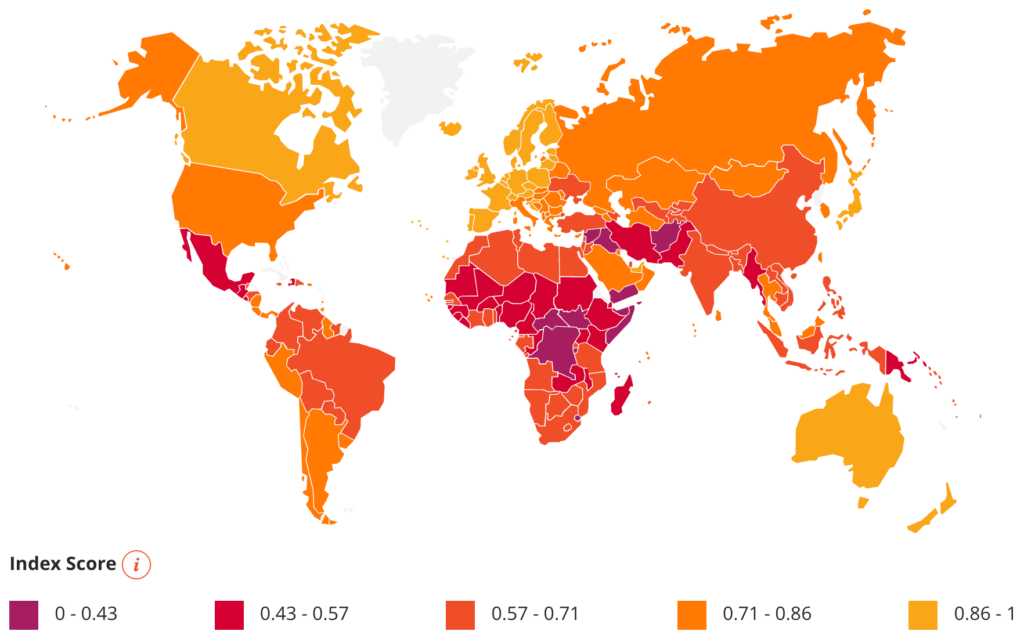The Georgetown Institute for Women, Peace, and Security (GIWPS) recently published its biennial report of the global Women Peace and Security Index (WPS Index) scores.
The WPS Index, which has been updated four times since its initial publication in 2017, measures the progress and challenges faced by women around the world and ranks 177 countries based on their inclusion, justice and security of women.
Elena Ortiz (SFS ’21), the research manager and lead author of the report, said the WPS Index offers a multi-dimensional ranking and distills countries’ performance on 13 indicators: education, financial inclusion, employment, cell phone use, parliamentary representation, intimate partner violence, community safety, political violence targeting women, proximity to conflict, absence of legal discrimination, access to justice, maternal mortality and son bias.
“All the indicators are equally weighted,” Ortiz told The Hoya. “Our philosophy behind this is we have chosen each of these 13 indicators as equally important and distinct pillars of women’s status.”
In the latest edition of the report, new indicators such as maternal mortality, political violence against women and proximity to conflict were added to reflect changing dynamics in the world as well as new data acquired by the GIWPS.

The WPS Index performance correlates strongly with national outcomes, according to Oritz.
“Countries where women are doing well are also more prosperous, or more democratic, are more peaceful, least at risk of fragility and conflict and are also those that are best prepared to respond to the impacts of climate change,” Ortiz said.
Denmark claims the top spot among 177 countries in terms of women’s status, scoring more than three times higher than Afghanistan, which ranks at the bottom.
Countries from Central and Eastern Europe and Central Asia tend to have the highest regional scores, while Sub-Saharan Africa and conflict-affected states show the lowest scores. The bottom 20 countries have all faced armed conflict in the past two years, underscoring the gender dimensions of conflict and its disproportionate impact on women, according to the study.
Sophia Sfiroudis (SFS ’26) said she was surprised not to see the most powerful countries, such as the United States, higher up on the list. The United States placed 37th overall.
“I was not surprised that lower-income/developing countries were ranked lower because these countries often have high levels of inequality and polarization that cause social divisions. However, nowhere on that list was a ‘great power’ listed,” Sfiroudis wrote to The Hoya.
“I think that the fact that the U.S. is not listed in the top 10 could be cause for much controversy. This could call into questions regarding inclusivity among genders in society and cause a strong divide in public opinion,” Sfiroudis added.
Ava Kawamura (CAS ’26), the main research assistant for the report, said the report is a great tool for the public and policymakers to understand the challenges and difficulties women around the world face.
“If you have no idea about anything related to women, peace and security, it’s a great place to start. It’s also a great tool to use for creating sustainable policies that really target gender equality and gender empowerment in the long run,” Kawamura told The Hoya.
Ortiz said all countries ranked by the WPS Index have room for improvement.
“The index offers a valuable source of information in terms of where women in countries are facing the most disadvantage and where exactly more research and attention is needed,” Oritz said.
Kawamura said that women, as one of the most marginalized groups in society, are especially vulnerable in global crises.
“Issues of authoritarian regimes or democratic backsliding and climate crises and women’s status overlap and augment each other in a way that cannot be overemphasized,” Kawamura said.
“Women’s voices are so important in being heard, and in these settings, and actually implementing sustainable change, and their experiences and marginalized backgrounds really make them some of the most key players in developing policies,” Kawamura added.




















